In reply to NickD :
I had no idea B&O ran to Springfield, I'll have to check out their map.
Edit: oh wow, they weren't too far from home, I just didn't realize those tracks were originally B&O!
In reply to NickD :
I had no idea B&O ran to Springfield, I'll have to check out their map.
Edit: oh wow, they weren't too far from home, I just didn't realize those tracks were originally B&O!
B&O FA-2 #4032, shortly before retirement, in the final dark blue dip with yellow lettering and herald. Sadly, none of the FA-2s survived into the Chessie era, so we never got Chessie Systems FAs running around. Before the Chessie Systems consolidation, the rosters of B&O and C&O were purged of all older or non-standard equipment in a systemwide fleet rationalization.
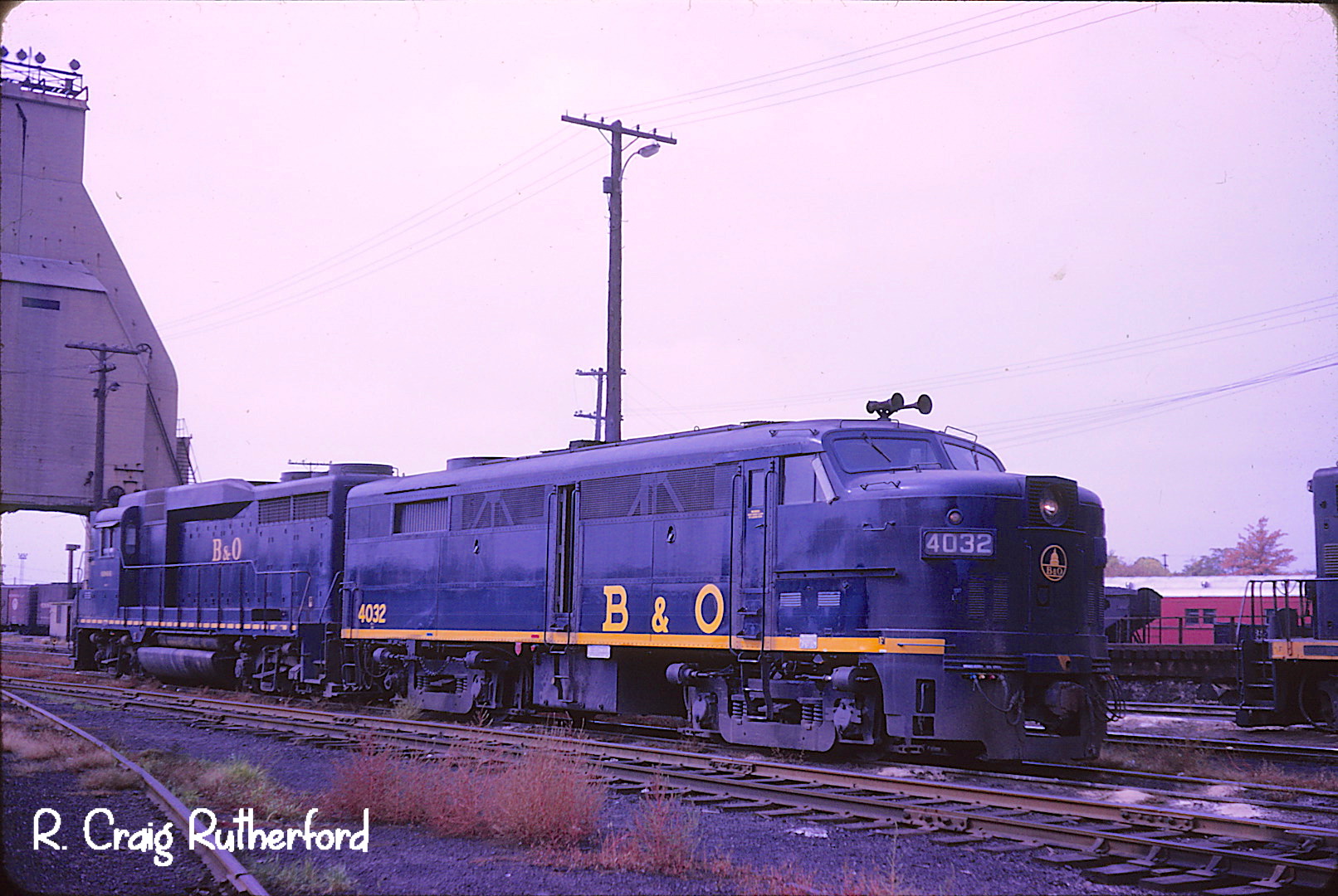
Fairly new GP30s in the "Sunburst" livery at Elsemere Yard. The GP30s were the first B&O locomotives delivered in this livery, and it was only applied from 1961-1964, before B&O simplified it to just a navy blue dip with yellow lettering and logo.

A B&O GP30 with a pair of borrowed Reading units. B&O had a controlling interest in Reading (who in turn had a controlling interest in Central Railroad of New Jersey).
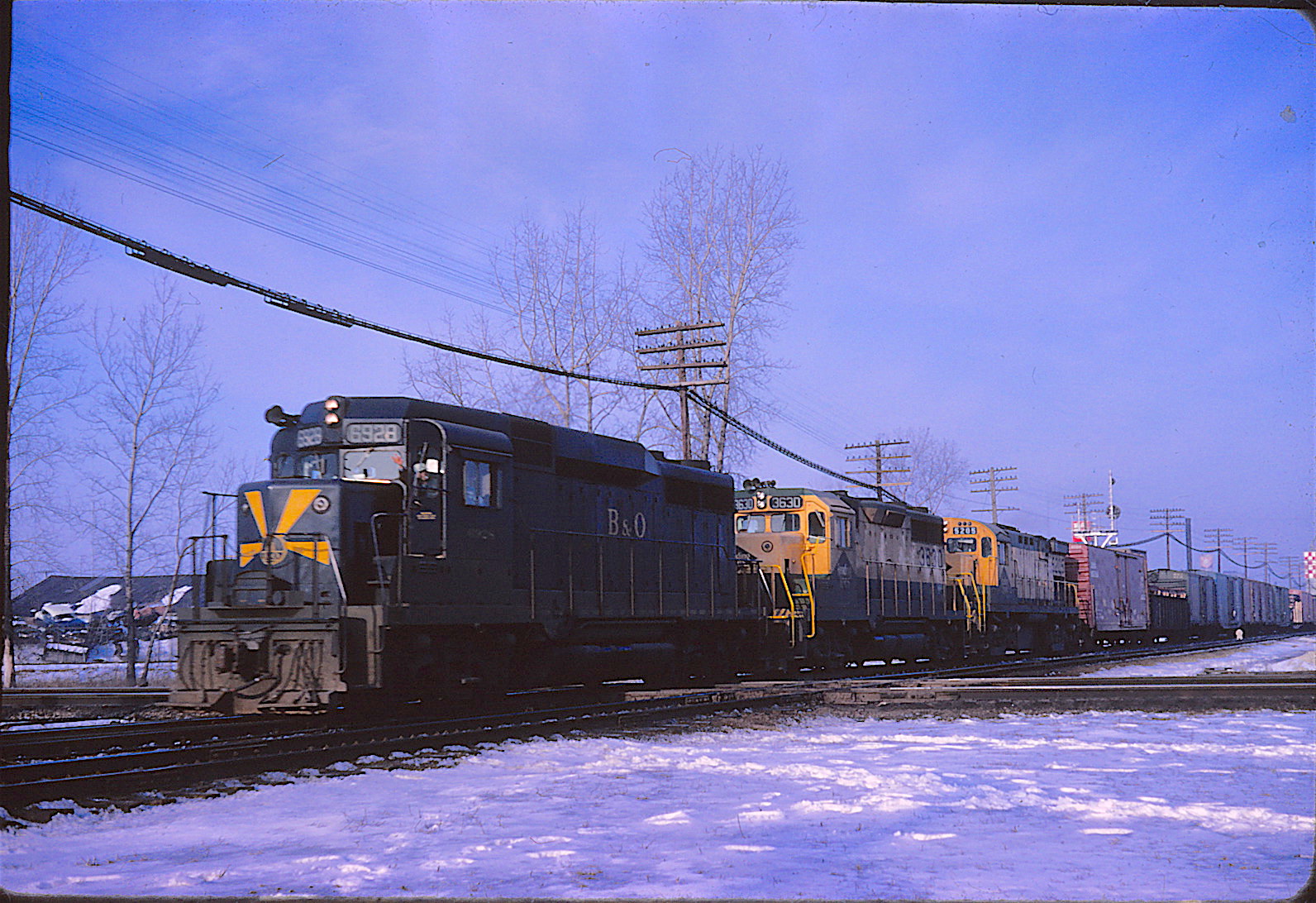
A Central Railroad of New Jersey GP40P in B&O blue and yellow. Norfolk & Western and Baltimore & Ohio both relied on the Central Railroad of New Jersey to get their passenger trains into Jersey City, but neither railroad wanted to be purchase the CNJ and merge it since they didn't want to deal with its unprofitable commuter obligations, and so they both spent a good portion of the '60s propping up the CNJ. B&O and N&W F7s were frequently leased to the CNJ to alleviate power shortages, and B&O even sold eight SD40s to the CNJ. By 1967, the CNJ's primary commuter power was still thirteen Fairbanks-Morse H-24-66 Train Masters, which were on their last legs and had no manufacturer support, and so B&O financed the purchase of their replacements, with the idea that if CNJ completely folded up, the B&O would just take them back. Originally CNJ was looking at a passenger version of an Alco C430, which would have had high-speed gearing, dual control stands, and steam generators. B&O caught wind of the plan to purchase these C430Ps, and stepped in immediately, because the B&O hadn't purchased a non-EMD diesel since 1956 and had no desire whatsoever to end up with some oddbal Alcos at a time when they were rationalizing their roster. B&O stipulated that the purchased locomotive had to be an EMD, and so EMD cooked up the GP40P, which was a GP40 on a longer frame with a squared-off long hood that contained a steam generator, passenger gearing, and dual control stands. They were also delivered in B&O blue and yellow, so that if they reverted to B&O ownership it was just a simple matter of painting over the lettering and heralds, and they were even numbered in the same number block as B&O's own GP40s. They never actually went back to B&O though, because B&O/C&O/Chessie Systems eventually lost their interest in Jersey City, and the CNJ and Reading as a result, and so the GP40Ps were granted to NJDOT, along with Erie-Lackawanna's GE U34CHs, when Conrail was formed. Those same GP40Ps are still running today, after many, many rebuilds and modifications, something that likely couldn't be said if they had gone with the Alco C430Ps instead.
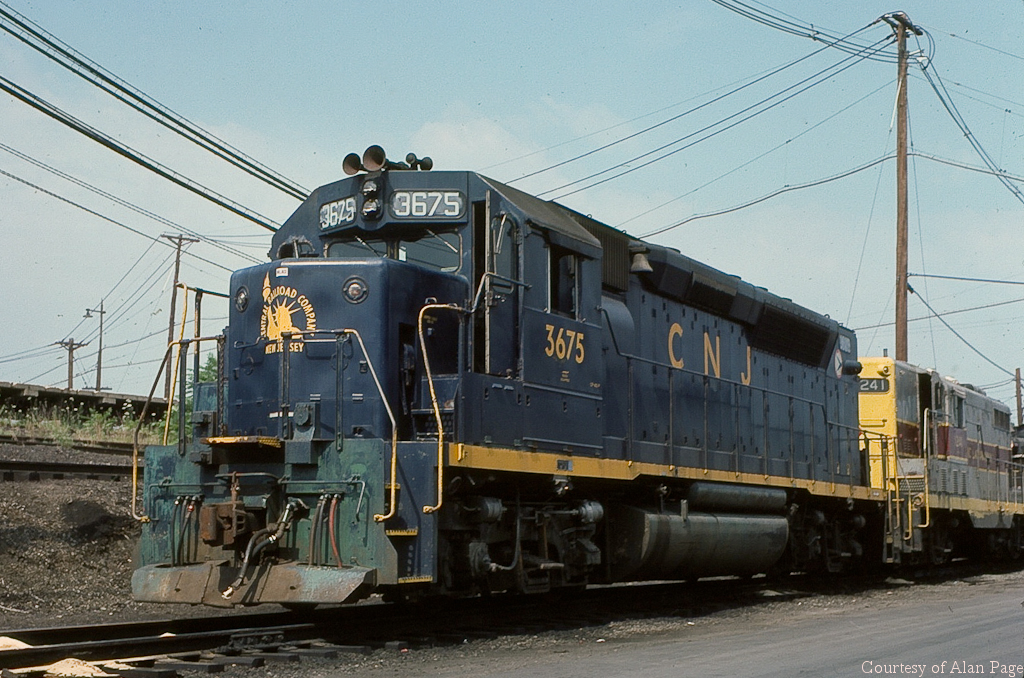
A GP40P running long hood forward, showing off the squared-off hood that was used on the GP40P, SDP35, SDP40 and SDP45 to accommodate the steam generator. Also, note the passenger cars that are in Great Northern colors. CNJ was bankrupt at the time, and still running a fleet largely composed of ancient passenger cars. Great Northern was trimming down their passenger car fleet, and so NJDOT purchased a bunch of them for the CNJ. Since many of them were used in the Empire Builder, they were jokingly referred to as Jersey Builder cars.
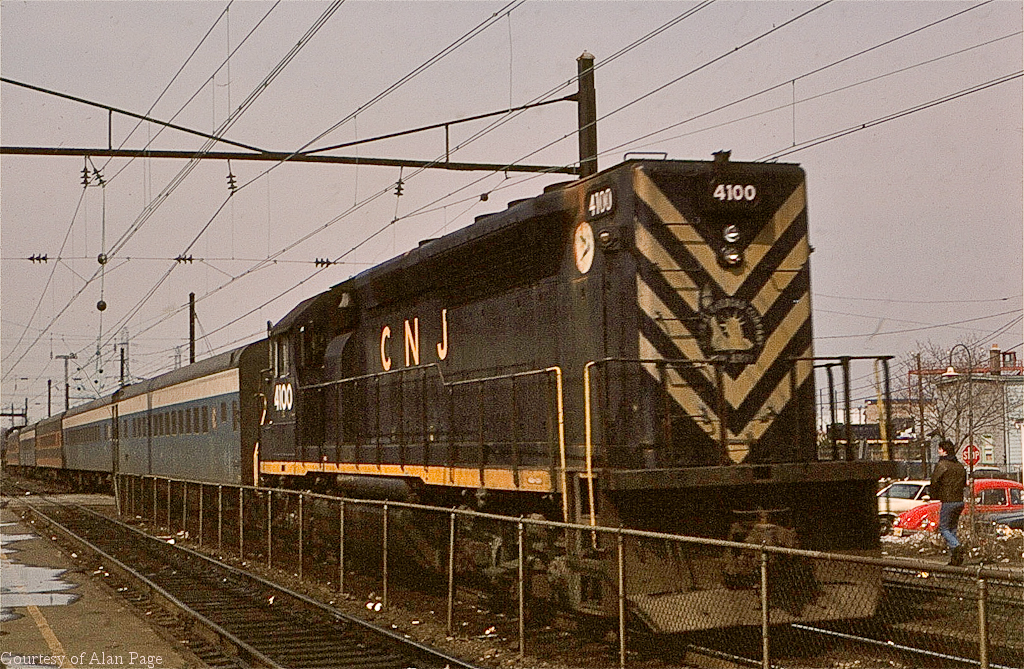
You can see that the passenger car is still wearing Great Northern orange and green but has CNJ reporting marks.

In reply to Pete Gossett (Forum Supporter) :
Their numbers have dwindled, sadly and there are only 3 of them left now; #4100, #4103, and #4109. They are now classed as GP40PH-2s, having had HEP generators installed in place of the steam generators and been upgraded to Dash-2 electrical specs, along with a number of other upgrades and changes including installation of PTC. I remember reading that the NJT shop crews said that putting PTC on the GP40PH-2s was a real bitch, between the age, amount of gear already crammed in them, and the amount of rebuilds that had been done over the years. They got bumped down off of passenger service a couple years ago, and had the HEP generators removed, and were being used in work train service, but then they were put back in revenue service 2 or 3 years ago. NJT also painted the #4109 back into the original CNJ livery.


NJT also had the truly bizarre GP40FH-2s. They were built by Morrison-Knudsen using the frames, internals and cab from GP40s sourced from Rock Island and New York Central and combined with the full-width rear body work from retired Burlington Northern F45s. Kind of the inverse of modern diesels, with a wide body and a narrow nose.

In reply to Pete Gossett (Forum Supporter) :
Iowa Pacific had a couple rattling around in Illinois Central passenger livery that they bought from NJT. They used them on the Hoosier State during the brief window when IPH took over operation of that from Amtrak. Two of them were at the Saratoga & North Creek for a short while as well. I don't know where they ended up ultimately.


On the subject of older power, apparently Canadian National is reactivating some old standard-cab GE Dash-8s and even at least one full-width cowl-bodied C40-8M. I can't imagine that the old Dash-8s have too many more dances left in them. CN had an existing roster of 81 C40-8Ms and then in 2010-2012 they purchased 134 secondhand Dash 8s from a bunch of sources. Since many were parked in 2020 and 2021, about half the fleet has been retired or sold off, leaving about 100 on the CN roster. Even in the summer of 2021 after all were parked, some C40-8Ms were working in Alberta. Their revival tends to be brief, given their intended use for surge fleet activity.
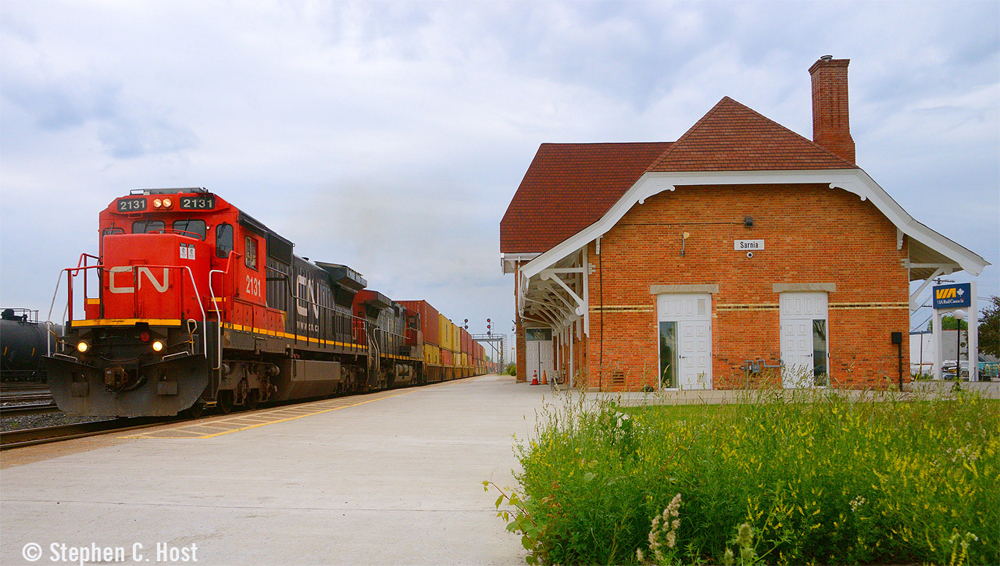
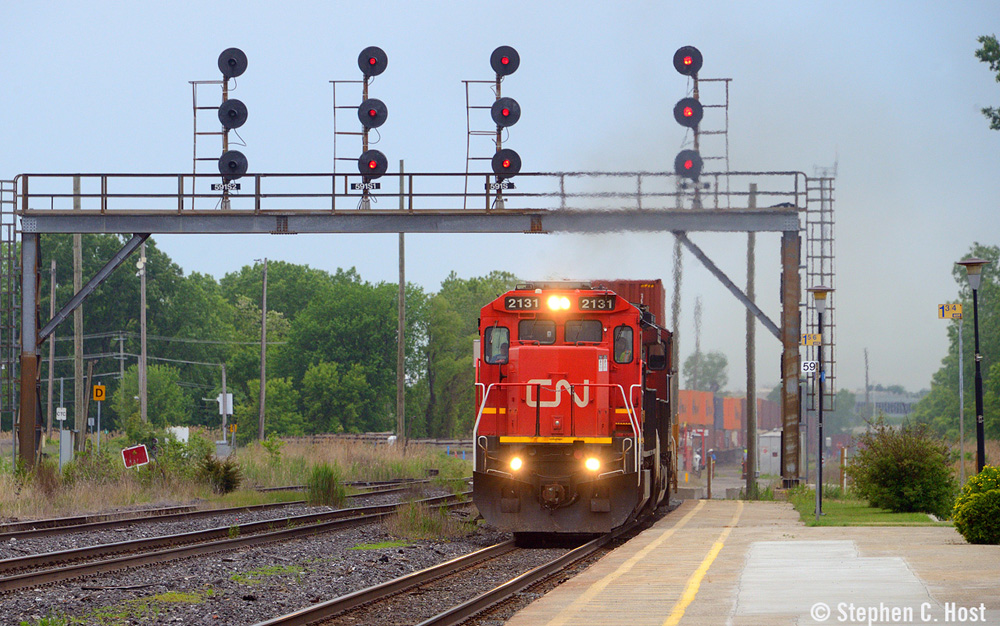
CN #2131 is an ex-C&NW unit.
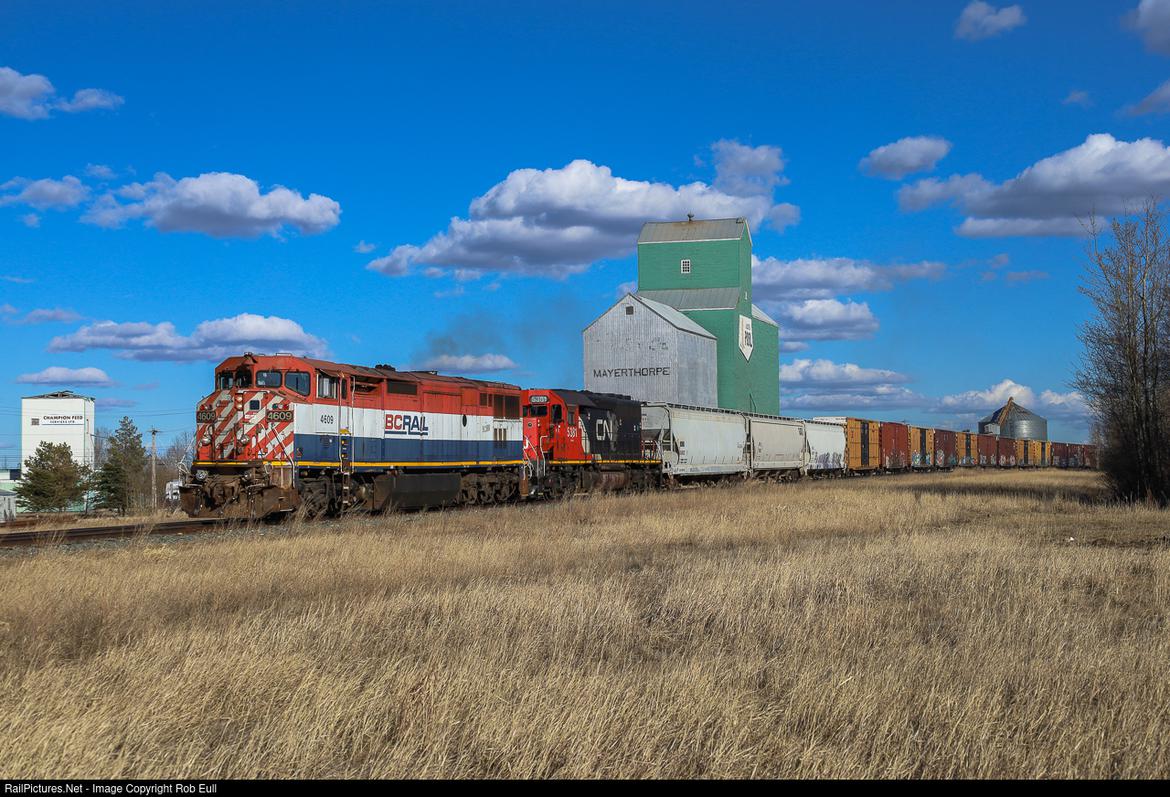
Ex-BCR C40-8M #4069 has also been spotted out and about, still in BCRail red, white and blue.

Also spotted out and running around is one of the "Blue Devils", #2466. These were ex-Conrail units that were purchased by LMS Leasing, then purchased by Illinois Central and then ended up on the Canadian National roster after they began integration of IC. They are still wearing Conrail blue with CN lettering over the top. Like the C40-8Ms and the "death star" SD70s, I can't imagine these have much time left.
I feel like if someone is going to save one of the Canadian cowl units, their time is running out. All the Bombardier HR616s are long gone sadly. They weren't very good machines, but they were historically important as the final gasp of Alco/MLW. I don't know how many EMD SD40-2F "Red Barns" are left. And the C40-8Ms on CN's roster are on borrowed time. There'll come a day when they are put back in storage for the final time.

Nevada Northern is working on restoring their ex-Bingham & Garfield Baldwin VO-1000 switcher to operation, and while the locomotive is deemed to be in relatively good condition, they have zero spare parts for it. So the Baldwin wizards at SMS Rail Lines hunted down a Baldwin/De La Vergne 608 engine that was built as a power-generating plant and has basically zero hours on it and was being retired. It was moved out to Ely and Nevada Northern used their 1907 steam derrick to lift it off the truck. Yes, in 2022 someone is using an Alco RS-3 to move a steam derrick to unload a Baldwin 608 engine. Pretty wild.

In reply to NickD :
I really want to make it out Nevada Northern someday. They sure seem to do things their own way.
In reply to Pete Gossett (Forum Supporter) :
I'm only a few hours north. You should totally come out and hang. It's worthwhile.
I'm just shocked that some place still had a Baldwin 808 for an emergency power generator. The support for those engines pretty much vanished in 1972 when Greyhound Corporation shut down what was left of Baldwin-Lima-Hamilton, and those engines were pretty much dinosaurs in the '40s. What is funny is that when Baldwin merged with Lima-Hamilton in '49, an internal committee was formed to determine which engine to move forward with: the Baldwin/De La Vergne or Lima/General Machinery Corp's Hamilton engine. It was pretty much unanimously decided to go forward with the Baldwin engine, even by the head of General Machinery's engine program. So as much of a dog as the 608/808 engines were, they were still somehow better than what Lima was using
And, yes that was not a typo, Greyhound Corporation did end eventually up with Baldwin-Lima-Hamilton in 1970, and BLH was finally closed down in 1972. In 1956, Westinghouse withdrew BLH from the locomotive market, but some of it's other divisions still existed, it's road construction equipment division, was quite healthy for example, and it did produce some service parts. In 1965, Westinghouse sold BLH to Armour & Company, of Chicago meatpacking fame, and then in 1970, Armour & Co sold it to the manufacturer of Greyhound buses.
There are a similar number of railroad companies that lived on much later than expected, or even still exist.
Penn Central: Yep, the largest transportation company in history and the largest corporate bankruptcy technically still exists as a real estate holding company. When the PC merger was in talks, PRR owned a large chunk of N&W stocks, which had been keeping them afloat. One of the ICC's conditions for the merger was that PRR had to divest themselves of the N&W stocks, and so before the PC merger, the PRR hurried to find some other companies to invest in to help keep them alive. They purchased shares of several airlines, trucking companies, a pipeline company, some real estate companies, even a golf course. The issue with those was that all of those businesses required steady investment to keep going, whereas the N&W stocks involved no investment, they just paid money. So, when Conrail was formed, Conrail was only meant to deal with the railroad side of the business, and the remainder of businesses it owned were split off. The real estate side of it still exists as Penn Central, althought it's more commonly known as American Premier Underwriters
Reading Company: Similar to Penn Central, the Reading Company had also diversified into real estate, and also similar to Penn Central, when Conrail was formed, they only incorporated the railroad portion of the business. In 1980, the real estate portion of Reading Company was purchased and renamed Reading International and moved into the cinema business. It currently owns 35 movie theaters in the USA, New Zealand and Australia. Yeah, it's strange. I read where that fact was discovered by a Railroad Museum of PA employee who was digging through archives and discovered that it still owned a number of land parcels (including one in Hatboro, PA off Byberry Road that only is 8' wide by 20' and has no tax assigned), only to learn that it now owned movie theaters. For a while it even used the Reading Crusader logo as it's company logo.
Conrail: I remembered seeing a bridge over a PA highway that had a pretty fresh Conrail sign on the side and was a bit confused by it. Turns out that when NS and CSX were negotiating the split of Conrail, there were crucial areas that both railroads wanted. As a way to get the deal approved, they came up with the Conrail Shared Assets Operations. Basically, any area that was vital to both CSX and NS was left in Conrail ownership, as a way for NS and CSX to not shut each other out. Those areas are operated with both NS and CSX locomotives and crew, but are not owned by either.
Wiscasset, Waterville & Farmington: This was a weird one. In 1934, the WW&F ceased operation after WW&F #8 derailed out in the middle of the woods. The WW&F had a mail contract that was good through the end of the year, so they bought a used (very rare) International mail truck to finish out the contract, and then in 1936 the railroad was abandoned and almost all the equipment scrapped and the rails pulled up. In 1989, when Harry Percival began construction of the recreated WW&F, he went to the state to file for a company name. When he told them the name would be the Wisscasset, Waterville & Farmington, the state informed him that the original charter, which dated back to 1854(!), had never been dissolved when the WW&F ceased operation. The state informed them that they just had to form a board of directors and hold a vote to reactivate the company, which they did. So the modern day WW&F is technically the same company as the one from 1854-1934.
Alco: A case of weird ownership, Alco was owned by Studebaker-Worthington from 1967-1969. Studebaker-Worthington was the result of the merger of Studebaker, Packard, Wagner Electric, and Worthington Corporation, and later Gravely Tractors, STP, Clarke Floor Machines and Onan, and was an attempt by Studebaker to diversify into other fields after their withdrawal from the automotive market. When Derald Ruttenburg took over, he tried to treat Studebaker-Worthington as an investment firm and get maximum profits out of every company with as little investing as possible, and axed Alco's locomotive businees in 1969 (granted, Alco was on a steady decline after the brief revival with the earlyCentury series), and the diesel engine business was sold off to White Motor Company in 1970 who then sold it to General Electric Company (the British one, not the US one) in 1977, where it was renamed Alco Power Incorporated By GEC, and then ironically sold to Fairbanks-Morse in 1994. Studebaker-Worthington kept MLW around, since it was fairly hale and healthy, but then sold it to Bombardier. By the mid-1980s, Bombardier ceased use of the MLW name and marketed several locomotives under the Bombardier name, none of which were a success, before shuttering MLW.
In reply to Pete Gossett (Forum Supporter) :
I imagine there's a lot of instances of corporations continuing to exist long after people thought they were gone, outside the rail industry. I mean, car guys always say Studebaker went out of business in '65, but it actually continued as Studebaker-Worthington until 1978. Pan Am flew it's last flights in 1991 but still existed until 2022
You'll need to log in to post.